Day two at Solar Power International (SPI) in Salt Lake City, meant Future and Quality Roundtables with pv magazine USA, people starting to get tired because shows are such hard work, and – of course – cool hardware.
South Africa’s Humless Energy Storage, has built some legos (below images). Except the legos are energy storage inverters and energy storage capacity. The inverters allow up to 4, 7 or 8.5 kVa to be pushed, while each of the batteries start at 10 kWh, and get larger, as well can have multiple batteries added. The units were tested in South Africa with its touchy grid, as such were designed to easily switch between grid and off grid.
In general, SolarEdge has a lot of cool things going on – many of which we’ve written about (and we’ll write more soon). But, on the floor at SPI we got to see a virtual reality tour (below fuzzy image, please pardon) of of what SolarEdge’s vision is, and it includes making your work, home, car, hot water tank, and so much communicate with the power grid to make things smoother. Many big grid people talk about this vision, whereas it seems SolarEdge is doing it.
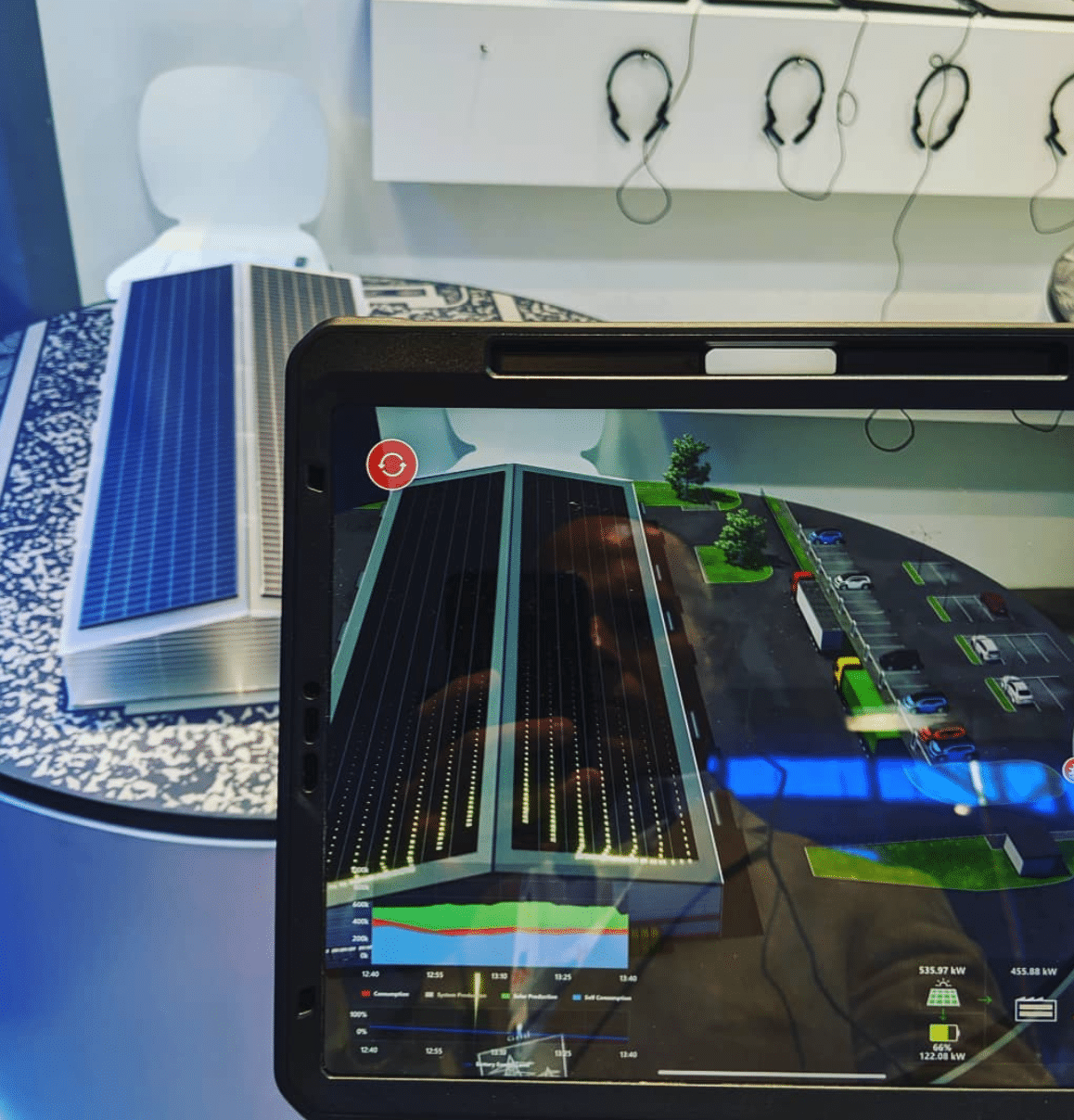
When you’ve got to put metal in the dirt, its nice to have a machine helping you. This unit, the simplest of the models from Veemer, can put 200 posts a day in the ground, accepts AutoCAD map layouts, and once it manually gets close enough to position, then fine tunes the exact location to plant your pile. The larger units have higher levels of automation, move a little faster, pound a little smarter.
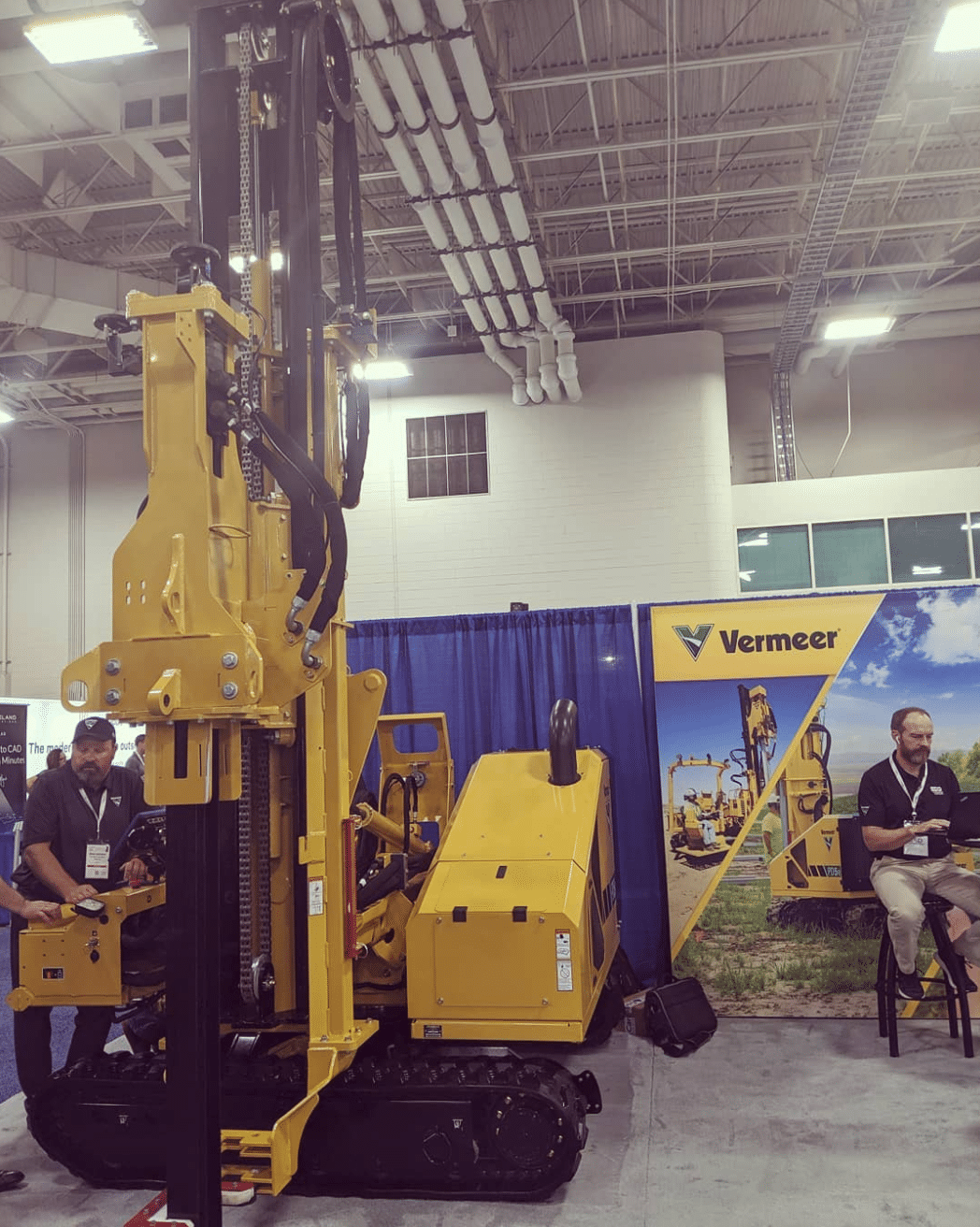
I’m still a dreamer in bifacial gain from rooftop solar with white top roofs – no data yet though, so there’s a chance I’m wrong on this. Others think the same, like Speed Solar, although the gain value in the image is suspect. Most of the modeling that I’ve seen in the world suggests that we need a decent height above the ground in order to gain from the light bouncing underneath the module, and that seems logical…but, if we can even gain a tiny percentage of benefit as compared to single axis tracking ground mounts for a similar cost – then we’re golden. And, to a degree, it seems like an east-west panel setup here might allow for some interesting angles.
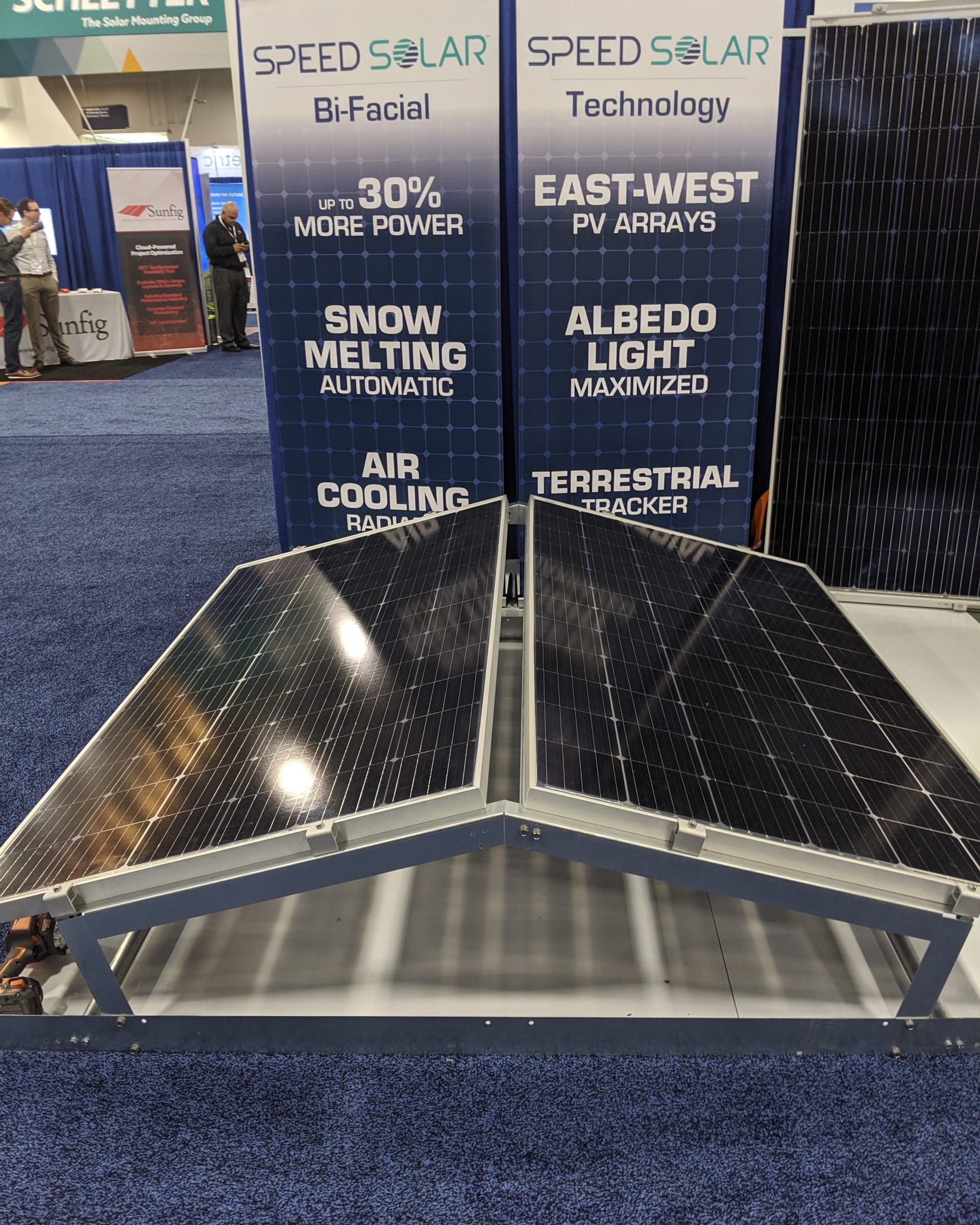
CATL is one of the world’s largest battery manufacturers for EVs, and now they’re making batteries to accompany solar. As all of the world’s battery manufacturers move toward solar power, and solar power keeps paying them and their employees and researchers decent volumes of money, we’re going to gain significantly from many learning curves (like Tesla’s recent research on the 1,000,000 mile battery). I didn’t get a chance to talk to CATL about this hardware, it just caught my eye as beautiful while I walked by, and that gave me a bit of joy.
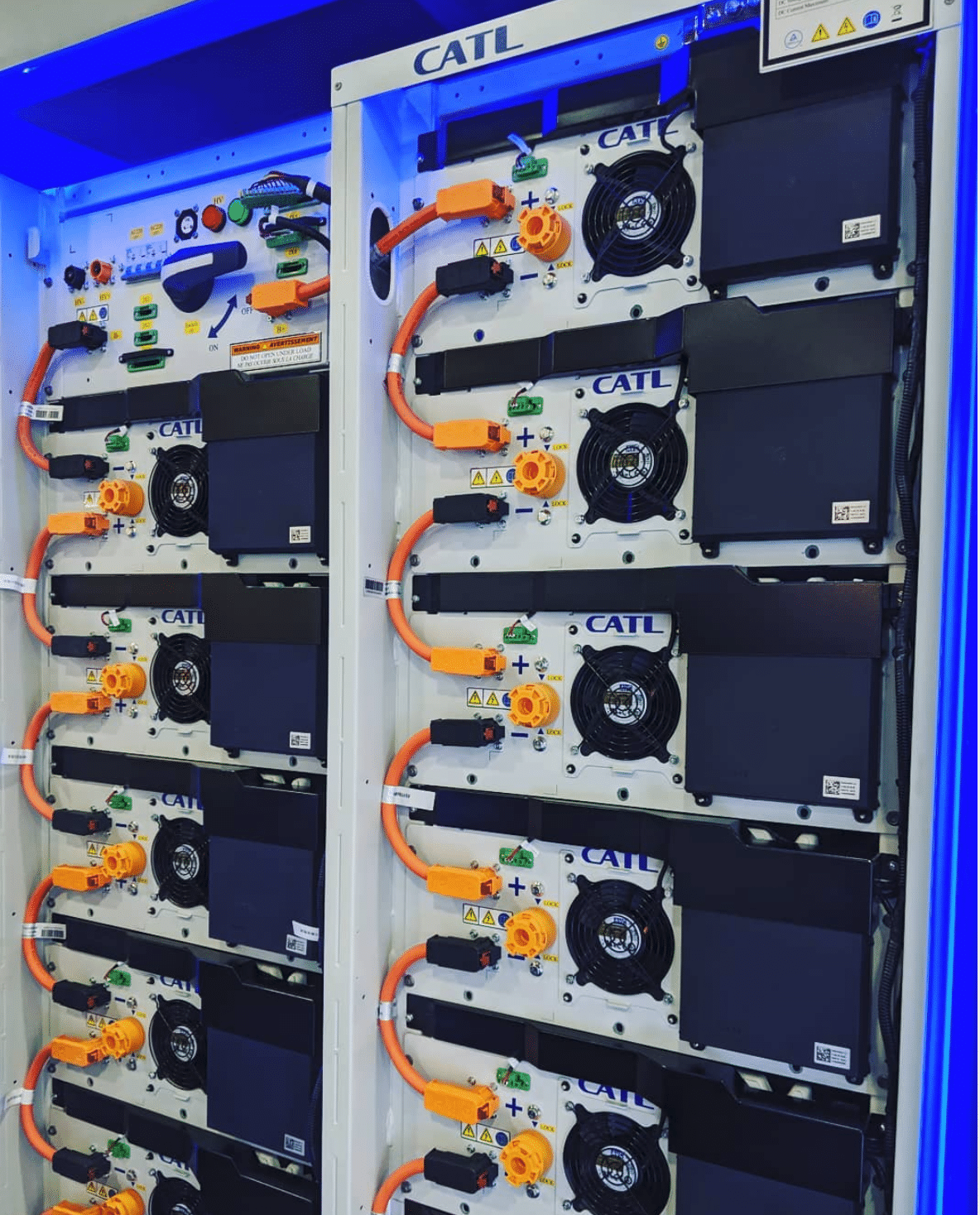
Just sayin’, but if you’ve ever got a solar panel ping pong table – I just might hang out with you. As a bonus for reading to the end you get to know that we’ll give you a special edition of this tomorrow – Saturday – because we want to make sure we get things out while they’re fresh.
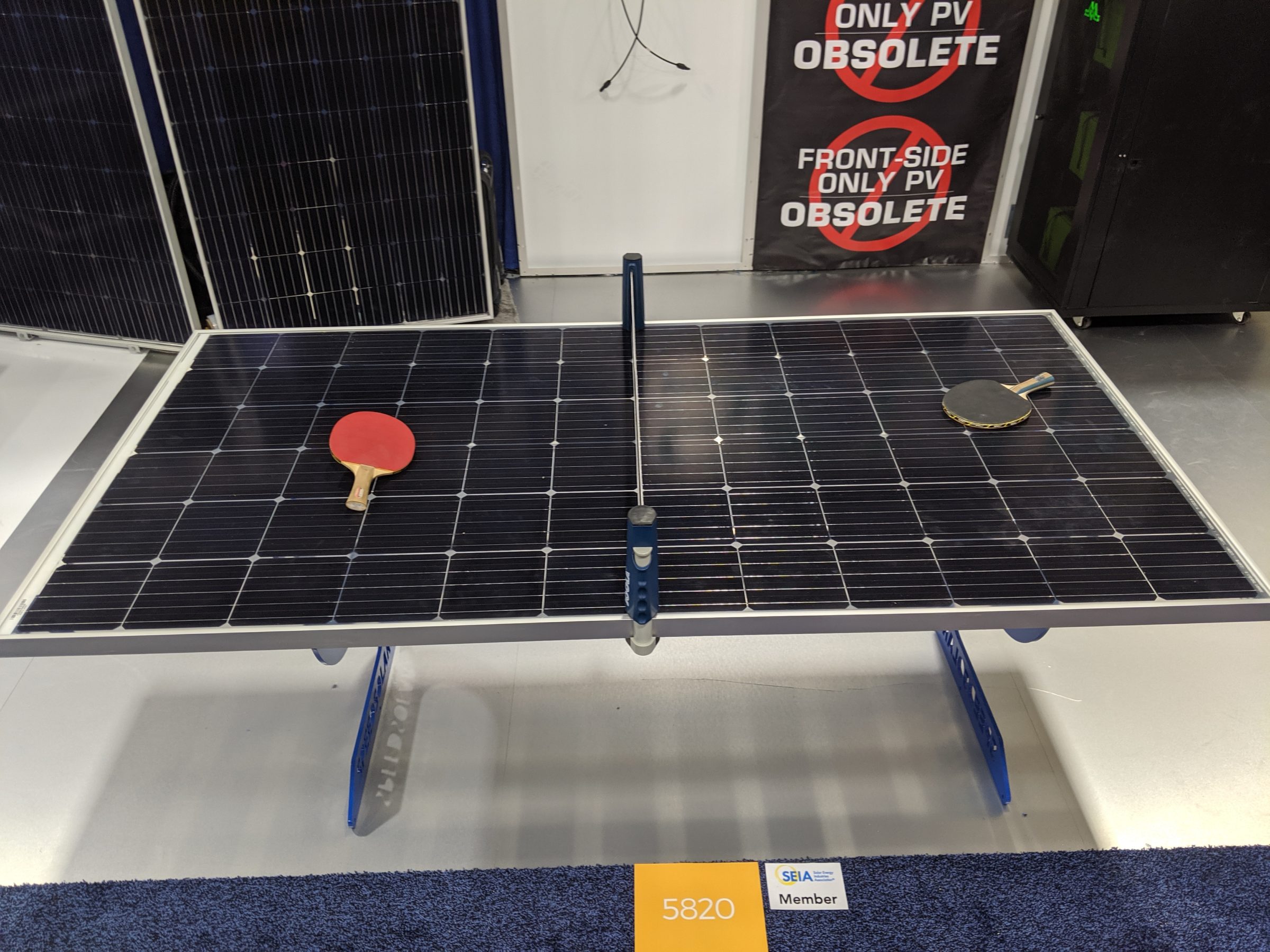
This content is protected by copyright and may not be reused. If you want to cooperate with us and would like to reuse some of our content, please contact: editors@pv-magazine.com.
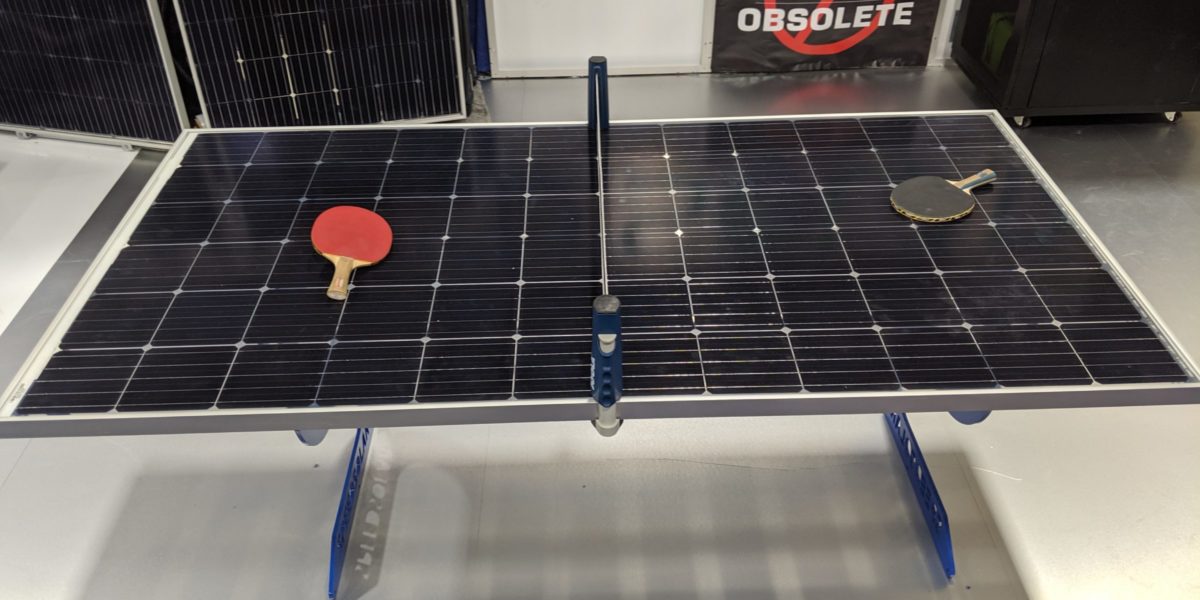










“The units were tested in South Africa with its touchy grid, as such were designed to easily switch between grid and off grid.”
The driving force behind this technology’s adoption may be in California’s supposed conditional power shutdowns to keep wildfires from starting. This Public Safety Power Shutoffs or PSPS is supposed to be “invoked” when weather conditions could cause power lines starting fires. Taking this technology with expandable energy storage and some of the smart house circuit breaker panels shown off at SPI could become the integrated back up power that is needed. If one mass produces this as a complete ESS the prices will come down and it would be foolish to not have one installed in one’s home.